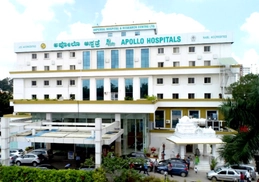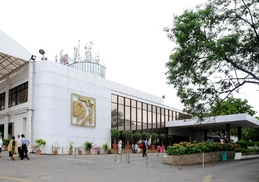
+91 8095511877

+91 8095511877
Diabetic retinopathy is a disease of the eyes that affects persons with uncontrolled diabetes. Your risk of having it will increase with age and for how long you have diabetes.
Diabetic retinopathy affects your retina. The blood vessels in it will get blocked or may start to leak. It reduces the blood supply to the retina to cause various problems. Then your retina will start making new blood vessels. These blood vessels are very fragile, and blood will start oozing out of it to create more issues.
You will have very few early symptoms. As it progresses, you will start having vision problems. Seeing black spots or floaters, blurred vision, etc., are some of the common symptoms. Gradually, these problems will get severe if you do not have treatment. Partial or complete loss of vision may happen in a few with critical issues.
To avoid this, you will have to keep your diabetes in control. You will also have control over your blood pressure and cholesterol levels. Treatments will depend on the stage and the severity of the disease.
If you have diabetes and your age is above fifty, you will need an eye test every year to rule out diabetic retinopathy. Detecting it early on will help to avoid future problems.
You will have diabetic retinopathy when your blood sugar levels remain high for a long time. High blood sugar will cause damage to blood vessels in all parts of the body.
Your retina is a sensitive area that needs an uninterrupted blood supply. Blocks in the arteries and veins in it can cause various problems. Due to diabetes, the blood vessels in your retina gets very weak. There will be small blood-filled bulges on its walls. These bulges may burst to ooze blood into the retina to cause problems with vision.
At the same time, the retina does not get enough blood to nourish it. The retina then starts to grow a network of new blood vessels to compensate for the lack of blood supply. Again these blood vessels also get weak ti spill more blood out to make the problem severe.
With time scars start to form on the retina and the eyewall. These scars slowly separate the retina and the eyewall to cause 'retinal detachment.'
As you know, diabetic retinopathy occurs in those with diabetes. But not everybody with diabetes will have this problem. There are some other factors also that may increase your chance of it.
The risk factors include
Other risk factors include
You will have small bulges in the blood vessels of the retina that leak small amounts of blood.You will not have any symptoms at this stage. You will not need any treatment at this stage. Keeping your diabetes, and other risk factors under control will help to prevent further problems.
Only one in four progress to the next stage
In the early stages, you will have no symptoms. It will start showing as the disease progress to advanced stages. Almost all the signs are due to the leakage of blood into the retina.
Some of the common late symptoms are
Your symptoms will get worse as the disease progresses. In some loss of vision will be the only one.
Diabetic retinopathy will have very few early symptoms. So an ideal way to know it early is to have eye tests regularly. Some of the common tests to diagnose it early are
In this procedure, the doctor will inject the medicine into your eye. The whole procedure takes about 30 minutes. You will not feel any pain, but may feel some pressure in the eye.
You will have this as an outpatient procedure. The doctor will use laser beams to close and seal any leaks in the blood vessels. It thus prevents or slows down the oozing out of the blood. It also helps to relieve the pressure in the eyes and further scars from forming in the retina.
Some will have mild irritation or pain in the eyes for some time. There will also be some blurring. Seeing dark spots is another problem. All these will go off after a day or two.
It helps to shrink the new blood vessels that form in the retina. The doctors will apply laser on the areas away from the macula, the central part of the retina.
You will need three to four sessions to complete the treatment. The blurring of vision may happen for a day or two. In a few, there will be some loss of peripheral vision as well as night vision.
It is a small surgical procedure to remove the vitreous humor along with the blood clots in it. The doctor will also remove any scar tissue that puts pressure on the retina. You will have a small cut in the eyeball to remove the fluid.
The new vitreous that forms will be clear and will help improve your symptoms. You will have the procedure under local or general anesthesia.
There are many steps you can take to prevent diabetic retinopathy.
Women with diabetes who get pregnant will need tests to detect any changes in the blood vessels in the retina


This article has been reviewed for medical correctness and relevance by
Dr Shalini Shetty
Dr Shalini Shetty is the Head of the ophthalmology department at Apollo hospitals, Bangalore. She has over 20 years of experience. She has expertise in all ophthalmic lasers and surgeries. Dr. Shalini has received many awards at both national and international level. She has been the first doctor to give a Braille prescription to visually impaired patients for which she has got appreciation from all over the world. In her career of more than 20 years, she has done tremendous service in this field. Dr. Shalini has experience working both in India and abroad

Ahalia Eye Hospital

Apollo Bangalore

Apollo Health City

Aster CMI

Meitra Hospital

Nanavati Hospital
Frequently Asked Questions
Who is at risk of diabetic retinopathy?
What causes diabetic retinopathy?
What are the treatments for diabetic retinopathy?
How to avoid diabetic retinopathy?